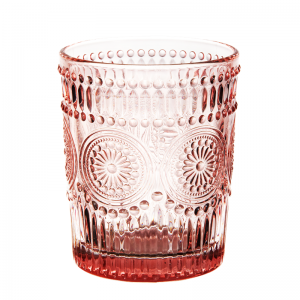Glazed glassware can play a significant role in modern interior design, adding a touch of elegance, sophistication, and visual interest to a space. Glazed glassware refers to glass items that have been treated with a glaze, which can alter the appearance, texture, and sometimes even the color of the glass. Here’s how glazed glassware can enhance modern interior design:
1. Aesthetic Appeal:
- Glazed glassware often has a smooth, polished surface that adds a luxurious and refined look to a space.
- The glazing process can introduce a subtle sheen, enhancing the glass’s reflective qualities and making it visually captivating.
2. Texture and Depth:
- Glazes can create interesting textures on glass surfaces, such as a matte or glossy finish. These textures add depth and dimension to the glass, making it visually intriguing.
- Textured glazed glass can contrast with other smooth surfaces in a room, creating a dynamic visual effect.
3. Light Play:
- Glazed glassware interacts beautifully with light, whether natural or artificial. The glaze can amplify the way light passes through the glass, creating captivating patterns and reflections.
- This interaction with light can make the glazed glassware the focal point of a room or accentuate other design elements.
4. Color Enhancement:
- Some glazes can introduce subtle color variations to the glassware, enhancing its visual impact. For example, a pale blue glaze can evoke a sense of calm and tranquility.
- Glazed glass items can complement the color palette of a room, tying together different design elements.
5. Versatility:
- Glazed glassware comes in various forms, from vases and bowls to decorative objects and lighting fixtures. This versatility allows designers to incorporate it into different spaces and styles.
- Glazed glassware can be used as standalone decorative pieces or functional items, adding both beauty and utility to a room.
6. Contemporary Contrast:
- In modern interior design, glazed glassware can serve as a contrast to other materials like metal, wood, and concrete. The sleek and smooth nature of glazed glass can balance out the textures of these materials.
7. Focal Points:
- Large glazed glass items, such as statement vases or sculptural pieces, can act as focal points in a room. They draw the eye and create a sense of visual interest.
8. Mixing Traditional and Modern:
- Glazed glassware can provide a bridge between traditional and modern aesthetics. Traditional glassblowing techniques are often used to create glazed glass items, connecting the piece’s craftsmanship to its modern context.
9. Customization:
- Glazing techniques can be customized to achieve specific effects, allowing designers to create unique and bespoke glassware that complements the overall design scheme.
10. Integration in Various Spaces:
- Glazed glassware can be used in various spaces, such as living rooms, dining areas, bedrooms, and even bathrooms. It can be incorporated through decorative pieces, lighting fixtures, or functional objects.
Incorporating glazed glassware into modern interior design can add an element of luxury and artistic expression to a space. Its ability to interact with light and introduce texture and color makes it a versatile and captivating addition that can elevate the overall aesthetic of the design.
















